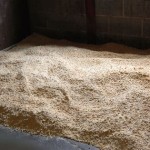## What Is Bedding Stone: A Comprehensive Guide **
Introduction:** Bedding stone, an integral component of sedimentary rock formations, plays a crucial role in the study of geology and civil engineering. It refers to the natural layers or planes within sedimentary rocks that formed as sediments were deposited and compacted over time. Understanding bedding stone and its characteristics is essential for various applications, including construction, mining, and oil and gas exploration. **
Formation and Composition:** Bedding stone originates from the accumulation and compaction of sediments, which can be composed of various materials such as sand, silt, clay, and organic matter. As sediments are deposited at the base of bodies of water (e.g., oceans, lakes, or rivers), they align with the force of gravity, creating parallel layers. With time, these sediments are subjected to pressure and compaction, resulting in lithification, the process that transforms sediment into rock. **
Types of Bedding:** Depending on the characteristics and conditions of deposition, bedding stone can exhibit various types of bedding structures, including: * **Planar Bedding:** Parallel, even layers with little or no visible internal structure. * **Cross-Bedding:** Inclined or intersecting layers formed by wind or water currents. * **Graded Bedding:** Layers that vary in grain size, from coarse at the base to fine at the top. * **Ripple Marks:** Small-scale undulations on the surface of a bedding plane, typically formed by wave or wind action. * **Load Casts:** Structures formed when overlying sediments sink into underlying, softer sediments. **
Significance in Construction:** Bedding stone is widely used in construction due to its durability, strength, and aesthetic appeal. Many types of bedding stone, such as limestone, sandstone, and slate, are quarried and cut into blocks or slabs for use in: * Building facades * Paving stones * Roofing tiles * Decorative elements The uniform bedding planes make bedding stone easy to split or cut along its natural layers, providing consistent sizes and shapes for construction projects. **
Role in Mining:** Bedding stone can serve as a valuable indicator for mineral exploration. The presence of specific bedding structures, such as cross-bedding or ripple marks, can provide clues about the depositional environment and potential mineral deposits. Understanding the bedding characteristics of the overlying or surrounding rock can guide geologists in identifying areas with a higher probability of mineral occurrence. **
Applications in Oil and Gas Exploration:** In oil and gas exploration, bedding stone plays a crucial role in understanding the stratigraphy and subsurface structure. Bedding planes can act as barriers to fluid flow or conduits for migration. Analyzing the orientation and continuity of bedding planes helps geologists in constructing geological models and predicting the movement and accumulation of oil and gas. **
Conclusion:** Bedding stone is an essential element of sedimentary rock formations that provides valuable insights into geological processes and has numerous practical applications in construction, mining, and oil and gas exploration. Understanding the characteristics and types of bedding stone empowers geologists, engineers, and builders to harness its properties for various purposes, ensuring successful and sustainable projects.

Premium Bedding Stone Greely Sand Gravel Inc

Premium Bedding Stone Ottawa Delivery

Premium Bedding Stone Ottawa Delivery

3 4 Inch Bedding Stone Ca7 Ca11 More Ozinga

Pipe Bedding Stone Millgrove Garden Supplies

Premium Bedding Stone Ottawa Delivery

Pipe Bedding Material

Natural Bedding Stone Small Kool Breeze Farms

Concrete Truck Bedding Stone

Natural Stone Washed Bed Linen Duvet Linenme








